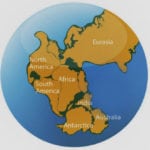 Animals
Animals  Animals
Animals  Music
Music 10 Noteworthy Rock Bands That Don’t Have a Drummer
 Technology
Technology 10 Times Regular People Built Unbelievable Things at Home
 Travel
Travel Ten Place Names You’ve Been Mispronouncing Your Entire Life
 Religion
Religion 10 Events That May Well Be Signs of the Times
 Humans
Humans 10 People Who Are Only Famous Because of Their Death
 Creepy
Creepy 10 Insects That Call Human Bodies Their Home
 Movies and TV
Movies and TV 10 Movie Studio Decisions That Completely Backfired
 Health
Health 10 Wacky but Fascinating New Health Stories
 Movies and TV
Movies and TV 10 Male Characters Played by Women
 Animals
Animals Ten Surreal Attempts to Bring Species Back from Extinction
 Music
Music 10 Noteworthy Rock Bands That Don’t Have a Drummer
 Technology
Technology 10 Times Regular People Built Unbelievable Things at Home
Who's Behind Listverse?

Jamie Frater
Head Editor
Jamie founded Listverse due to an insatiable desire to share fascinating, obscure, and bizarre facts. He has been a guest speaker on numerous national radio and television stations and is a five time published author.
More About Us Travel
Travel Ten Place Names You’ve Been Mispronouncing Your Entire Life
 Religion
Religion 10 Events That May Well Be Signs of the Times
 Humans
Humans 10 People Who Are Only Famous Because of Their Death
 Creepy
Creepy 10 Insects That Call Human Bodies Their Home
 Movies and TV
Movies and TV 10 Movie Studio Decisions That Completely Backfired
 Health
Health 10 Wacky but Fascinating New Health Stories
 Movies and TV
Movies and TV 10 Male Characters Played by Women
10 Forgotten Nations That Once Ruled The Land
Rome annihilated Carthage to ensure it would never again rise as a major threat. The Ottomans forever ended Byzantium’s glory. The vast armies of Persia were repeatedly beaten back by the Greeks, subjugated by the might of Alexander, and destroyed by the rise of Islam. The fates of once great and proud nations fill the pages of history books—and then there are those forgotten powers even the history books seldom mention.
10Burgundy
Western Europe
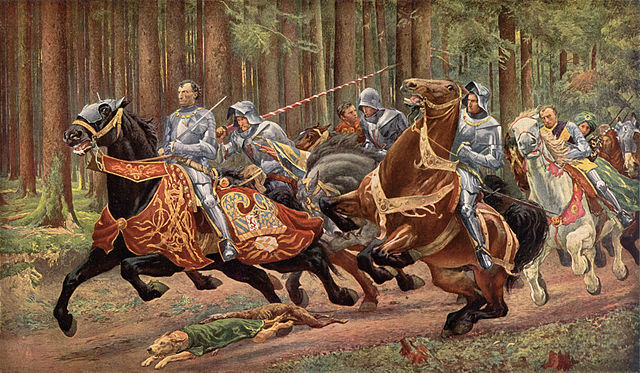
France’s greatest historical rivals are often considered to be England or Germany. Yet, for a time, Burgundy was arguably its greatest opponent.
We’ve previously mentioned how Louis the Pious, son of Charlemagne, divided the Carolingian Empire among his sons. His eldest, Lothair, received a vast swath of land that included what would become Burgundy. Over time, a powerful duchy evolved, controlling Burgundy proper, Alsace, Lorraine, Flanders, and Holland. At its height during the 15th century, it was one of the richest and most powerful states in Europe. The Burgundian’s rivalry with France knew no bounds—from betraying Joan of Arc to the English, to fighting on foreign soil during the War of the Roses.
For a time, it seemed that fortune favored Burgundy. Indeed, had history turned out differently, proper French might have been a mere dialect and Bourgignon the norm. The sudden death of Duke Charles the Bold on January 5, 1477 changed things entirely, raising the question of the Burgundian Inheritance. Charles’s only heir was his daughter, who was supposed to marry into the French royal house. Instead, she married Maximilian I, the Holy Roman Emperor and head of the House of Habsburg. In the subsequent race to claim the Burgundian lands, France merely traded one great rival for two more—Austria and Spain.
9Novgorod
Eastern Europe
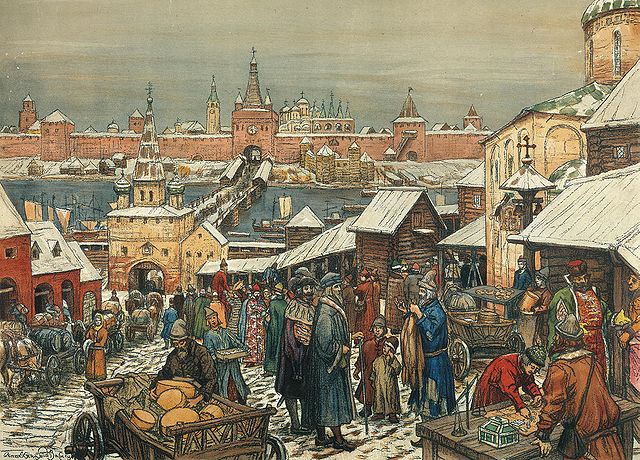
The city of Novgorod, whose residents sometimes called it “Lord Novgorod the Great,” truly lived up to its name. Under the leadership of Alexander Nevsky, the Novgorodians vigorously defended their beloved city against invasions from Sweden and the Teutonic Knights. Though they were subjugated by the Mongols, they managed to retain a degree of independent rule and even rose to prosperity.
By the 14th century, Novgorod had become one of the busiest trading ports in Europe—an estimated 400,000 people lived in the city. The Novgorod Republic stretched from the Arctic Circle to the Ural Mountains. The people of Novgorod cherished their independence, beyond the grasp of autocratic kings.
Sadly, this state of affairs wouldn’t last forever. The Principality of Muscovy had long been jealous of Novgorod’s riches. Furthermore, Novgorod’s ties with Catholic Lithuania were anathema to the stern Orthodox doctrine followed by the Muscovites.
Ivan III, also known as “Ivan the Great,” invaded the city in 1471, subsequently annexing it in 1478. Nearly 100 years later, another Ivan, known to history as “Ivan the Terrible,” would lead his armies to massacre and exile many of Novgorod’s citizens, burning much of the city, and destroying priceless historical records. The glory of Novgorod was no more. It would be Muscovy (Moscow) that would become the center of Russian politics and society.
8The Qara-Khitai
Central Asia

During the 12th century A.D., the Khitan people, led by Yelu Dashi, fled west to escape the onslaught of the Jurchen tribes. Their Liao Dynasty empire in Northern China was no more, and they faced a grueling journey across the arid steppes to find a new place in the world.
By A.D. 1134, Yelu Dashi and his people had arrived in Balasagun, in modern-day Kyrgyzstan. Further conquests soon established a new empire—the Western Liao. Thanks to their Chinese heritage, the Khitan practiced Buddhism mixed with Animist beliefs, while the majority of their new subjects were Muslim. Despite this, there was only harmony. In fact, some Muslims believed that their Khitan overlords were the “wall” between the Islamic world and the barbarous hordes beyond.
Decades of prosperity passed until the arrival of Kuchlug, a prince of the Naiman tribe of Mongolia, who had fled after his father was killed by Genghis Khan. Kuchlug, a Nestorian Christian, sought refuge among the Khitan and was even allowed to marry a Khitan princess. In A.D. 1211, Kuchlug usurped the throne, then began campaigns against neighboring Muslim kingdoms, forcibly converting captives to the Nestorian faith.
Seeing his chance, Genghis Khan sent his best lieutenants, Jebe Noyan and Subotai, to capture Kuchlug. Angered at the usurper’s actions, the Khitans readily welcomed the invaders. Kuchlug was defeated in battle and eventually beheaded in 1218. After the relatively peaceful conquest, the Mongols found that the formerly nomadic Khitan had become experts in statecraft and administration. They were assimilated into the Mongol Empire, not as soldiers, but as some of its finest civil officials.
The short-lived empire of the Khitan may have contributed to the legend of Prester John, a mythical Christian figure whom Crusaders believed would assault Muslim lands from the rear. Some historians claim that the Khitan’s earlier conquests helped fuel the legend, while other suggest that Kuchlug, as a Nestorian Christian, added to the stories.
The Khitan also had one more contribution to history. The old European name for China, “Cathay,” is derived from “Khitan.” Indeed, they were known in Europe as the “Qara-Khitai,” the “Black Cathays.”
7Vijayanagar
Indian Subcontinent
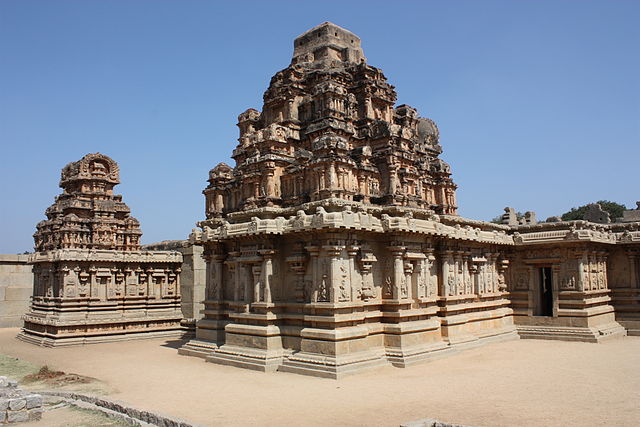
The Vijayanagar Empire ruled southern India for over 300 years, from 1336 to 1646. Domingo Paes, a Portuguese chronicler, marveled at how its capital was “as large as Rome and very beautiful to the sight; the palace of the king is larger than the castle at Lisbon.” Another Portuguese traveler, Duarte Barbosa, was astonished at how tolerant its rulers were of people of other faiths. Barbosa explained that Vijayanagar “allowed such religious freedom that every man may come and go, and live according to his own creed—whether Christian, Jew, Moor, or Hindu.”
Life was good in the empire, most notably during the reign of Krishnadevaraya, when the empire reached its greatest extent, defeating numerous Muslim invasions. Unfortunately, his successors were unable to fill the void he left behind. His son-in-law, Ramaraja, usurped the throne and plotted to have the neighboring Deccan Sultanates fight among themselves, allowing him to attack when they were weakened. Unfortunately, his plan backfired—the Deccan Sultanates ended their rivalries and allied to crush Vijayanagar. On January 23, 1565, Vijayanagar’s armies were destroyed and Ramaraja himself was soon executed.
Murder and pillaging followed nonstop for almost six months. When a Venetian traveler arrived at the old capital three years later “it had degenerated into a den of brigands, a pile of carbonized ruins invaded by creepers and tigers.” Some of Vijayanagar’s princes and administrators escaped to rebuild, though their works were a faded shadow of what the empire had once been. The city’s ruins are now a major tourist destination and a UNESCO World Heritage Site.
6Majapahit
Southeast Asia
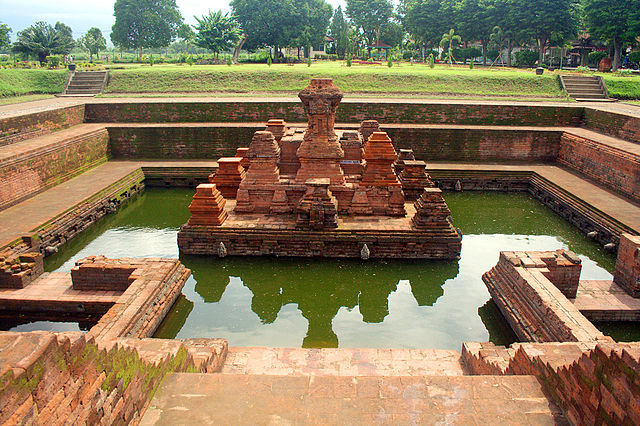
Those lucky enough to visit the beautiful island of Bali, Indonesia might wonder why a predominantly Islamic nation has such an abundance of Hindu temples. The answer can be traced back to 1293, when the Mongols were turned back from capturing Java by Raden Wijaya, the founder of the Majapahit Empire. With the Mongols defeated, Raden Wijaya and his successors set about expanding their domain. The Majapahit controlled the sea lanes, bringing untold riches to their domain. Their fleets sailed throughout modern-day Indonesia, obtaining submission or tribute.
The empire would reach its peak under Gajah Mada, a commoner who rose through the ranks to help restore King Jayanagara to power and subsequently became the commander of the king’s bodyguards. The king was later murdered by his physician—although many historians suggest the plot had been hatched by Gajah Mada himself after the king took his wife for his own. Gajah Mada became the most powerful man in Majapahit politics. He even made good on an oath, the “sumpah palapa,” that he would not eat spices until he conquered the entire archipelago (another interpretation would be that he would not enjoy special privileges or revenues from his subjects until he could subjugate the empire’s rivals).
Although the empire’s rulers were Hindu, Buddhism was also prevalent, with no evidence of conflict. In fact, Hindu and Buddhist ministers held equal status in court. Islam, which had been practiced by neighboring kingdoms, would later become the dominant religion as Majapahit trade and influence declined. Despite this turn of events, the people of Bali, with their many temples and gardens, still consider themselves descendants of the Majapahit.
5The Hyskos
Middle East And Egypt
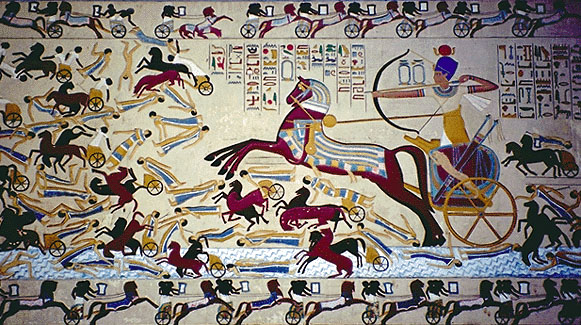
We’ve previously mentioned the Hurrians, a forgotten civilization which flourished in the Middle East during the second millennium B.C. They would later be subjugated by the Assyrians under King Shalmaneser I, who captured and blinded 14,400 Hurrians.
According to some historians, another group of Hurrian origins were the better-known Hyskos, herdsmen and horsemen who migrated into Egypt around the 17th century B.C. The Hyksos eventually broke the power of the old Egyptian dynasties and would rule the Nile Delta for 108 years.
The Hyksos revered an unnamed Asiatic storm god, whom historians have compared to the Egyptian god Seth. Archaeological work has revealed that the Hyksos had unique Canaanite temples, Palestinian-type burials (including those of horses), as well as frescoes that had some similarities with the Minoans.
The Hyksos introduced new weaponry to the Egyptians, including the composite bow, sickle-sword, improved battleaxes, and mail armor. The Hyksos expertise with horses led many historians to believe that they were the ones who brought war chariots to Egypt. All of these innovations would later be used against them—the Egyptians drove them out completely around 1521 B.C.
4Cahokia
North America
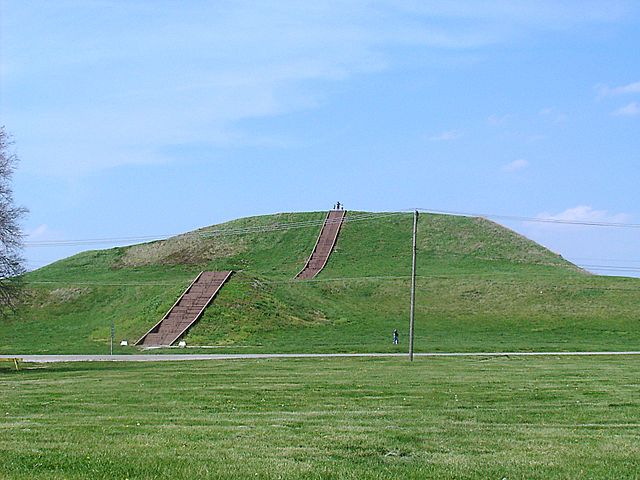
In 1982, the Cahokia Mounds State Historic Site was designated a UNESCO World Heritage Site. The largest pre-Columbian settlement north of Mexico, the site contains approximately 120 mounds of various sizes. The best-known is Monk’s Mound, the largest prehistoric earthwork in the Americas.
During the Woodland Period from A.D. 700–900, the emergent people of the Mississippi gradually settled in Cahokia. There was a dramatic increase in the population around 200 years later—it was around this time that Monk’s Mound was constructed. After A.D. 1100, the population in Cahokia began to steadily decline.
Although some early European settlers might have stumbled upon the old city and its mysterious mounds, no detailed accounts have survived. In fact, the oldest written description of Cahokia was compiled by Henry Brackenridge, a lawyer, amateur historian, and friend of Thomas Jefferson. Brackenridge claimed that he was “struck with a degree of astonishment, not unlike that which is experienced in contemplating the pyramids” upon seeing the great mounds. Newspapers took little note of his work—leading him to complain to Jefferson himself. It didn’t help.
By the turn of the 20th century, horseradish farmers had turned Cahokia’s second-biggest mound into a landfill. Subsequently, a subdivision was built on another part of the site and other mounds were destroyed for gambling sites and a pornographic drive-in. Ignorance led humanity’s quest for knowledge astray and there is much we now may never know about this amazing civilization.
3Caral And The Norte Chico Civilization
South America
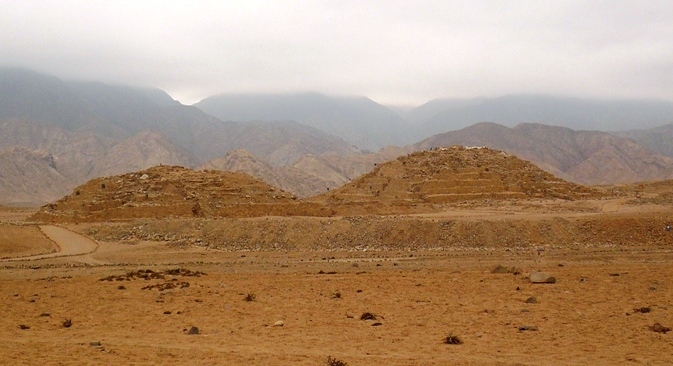
For centuries, historians and archaeologists have combed the Indus Valley, Mesopotamia, Egypt, China’s Yellow River, and the Americas in search of a “Mother Civilization”—one of the sites where complex, city-dwelling societies independently developed.
In 1994, Peruvian archaeologist Ruth Shady Solis and her team began excavating and studying the Caral site in the Supe Valley near Peru’s western coast. What they found was astonishing.
Six large pyramids once stood in its vast central zone; several smaller pyramids, plazas, temples, amphitheaters, and residential districts were also part of the area. The oldest artifact found at the site was from 2627 B.C., predating the Great Pyramid of Giza by around 50 years. The Olmecs, long believed to have been the first great civilization of the Americas, emerged around 1,400 years after Caral. Solis and her team also discovered that, unlike many civilizations, the people of Caral banded together and prospered not for mutual defense or warfare, but for trade. Indeed, no weapons, battlements, or mutilated bodies have been found at the site. However, Solis has noted that Caral might have simply been the center or capital of the actual civilization, which could have spanned over much of the Norte Chico region of Peru.
Other experts still argue about whether Caral was truly a “Mother Civilization,” as Solis suggested that it might be. Indeed, new discoveries in light of her findings have revealed even more ancient sites being discovered in Norte Chico. One, Huaricanga, has been dated to at least 3500 B.C., which would make it the oldest city in the Americas.
2Ghana, Mali, And Songhai
West Africa
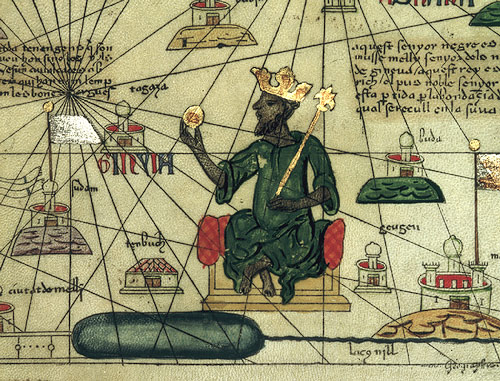
Today, West Africa is home to some of the poorest nations in the world. But from the 8th century to the 16th, things were very much different. The kingdoms of Ghana, Mali, and Songhai were dazzling pinnacles of wealth and culture.
The Empire of Ghana flourished in what is now Mali and Mauritania (far to the north of modern Ghana) and was primarily composed of the Mande people. The sub-Saharan region known as the Sahel, now mostly arid plains, was once a fertile savannah suitable for farming and raising livestock, allowing Ghana to prosper.
As Ghana eventually went into decline, the Empire of Mali rose to take its place. Of note is arguably its greatest ruler, the famously wealthy Mansa (Emperor) Musa I, who completed a pilgrimage to Mecca in A.D. 1325. While passing through Egypt, it was said that he gave away so much gold that its value substantially decreased in Cairo.
Sonni Ali of Songhai was an able commander known for his expert horsemen and amphibious assaults via canoes. His aggressive policies led to a period of expansion, most notably the capture of Timbuktu, West Africa’s foremost intellectual city. His successor Askia Mohammad Toure brought Songhai to its zenith. Toure, a devout Muslim, would also complete the Hajj and even be declared Caliph of all of the Sudan.
Expeditions from Morocco would eventually arrive in pursuit of lands and riches. The once proud halls of the Mande and Soninku peoples were destroyed, the gallant warriors no match against the tide of imperialism. Monuments such as the Mosque of Djenne and the libraries of Timbuktu now serve as reminders of West Africa’s faded glory. Indeed, centuries of civil strife, slavery, and war have led the region to become what it is today. It is a humbling thought that when Europe was experiencing some of its darkest years, it was in West Africa where light shone brightest.
1Khazaria
Crimea And The Caucasus
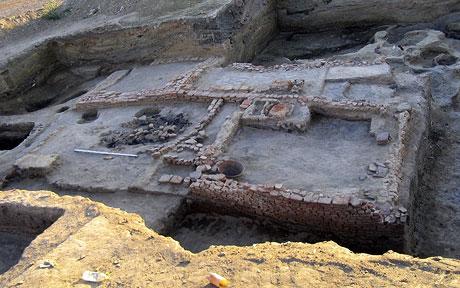
For 200 years, from the seventh to ninth centuries, there was an empire of Turkic Jews which spanned the entire Crimean Peninsula, the Caucasus region, and most of modern-day Ukraine and Georgia. It was called Khazaria, and it dominated trade in the region despite many external threats.
The Khazars were originally nomads who practiced Tengriism. Over time, many converted to monotheistic religions, primarily Judaism. There were also thousands of Christians and Muslims in the empire—religious freedom and tolerance was a key factor to its stability.
Indeed, one essay characterized the Khazars as “an unusual phenomenon.” They were surrounded by pagan nomads, yet they had a structured government, a prosperous trade system, and an organized army. At a point in history when “great fanaticism and deep ignorance” raged throughout Western Europe, Khazaria was famed for its justice and tolerance. One historian put it quite succinctly: “Khazaria was the one place in the medieval world where the Jews were their own masters.”
Numerous wars between the Khazars and Arabs marked the seventh and eighth centuries, with neither side able to conquer the other. The Khazars proved to be a valuable ally to the Byzantine Empire, becoming a buffer against Islamic invasion from one side.
Ultimately, Khazaria would meet its demise when the Russian Prince Sviatoslav began his relentless conquest of Eastern Europe. The prince of the Kievan Rus believed Constantinople was his ultimate prize, but to get there he had to take out Byzantium’s allies one by one. Sviatoslav subjugated the Bolghars then turned his eyes toward Khazaria in 965. The major fortress of Sarkel was destroyed, and the capital of Itil was razed to the ground. Later visitors would remark that in Itil “no grape or raisin remained; no leaf on a branch.” Such was the destruction wrought by the prince.
Khazaria’s light was all but extinguished—a once mighty empire reduced to a rump state. “The glistening star on the gloomy horizon of Europe faded without leaving traces of its existence.”
Jo loves reading about humanity’s forgotten past, and how there is still a lot left for us to discover. You can reach him through email or in the comments section.








